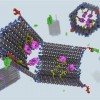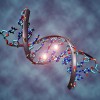Canines and cancer
 For my blog, I thought I would talk a bit about dogs and cancer. Why, you might ask? I’m not a dog owner, but recently a few stories about dogs and cancer were brought to my attention and I thought they might be interesting to others.
For my blog, I thought I would talk a bit about dogs and cancer. Why, you might ask? I’m not a dog owner, but recently a few stories about dogs and cancer were brought to my attention and I thought they might be interesting to others.
You may not know this, but dogs can actually smell some cancers. It doesn’t even take a sophisticated sniffer dog to do this: even some household dogs can be trained to tell the difference between the odor of a normal person and that of a person with lung cancer. In theory, your dog Max could be a living cancer detector, letting you know early on that you are at risk.
Dogs also get cancers. If fact, cancer is the number one killer of dogs, and about one in three dogs get cancer. Every year, almost a million dogs die of cancer in the United States. Often, cancers in dogs are treated with the same treatments that are used in humans. This is because dogs and people are very similar, so many of the drugs developed to treat people work on dogs. This summer, the first cancer drug specifically for dogs was approved by the FDA. The drug, called Palladia, shrinks the size of mast cell tumors by killing tumor cells and cutting off their blood supply. If you are a dog owner, this may be reassuring: at least one drug has now been tested on dogs before it goes into use.
Dogs and their owners are now being called into service in a different way. In an effort to speed up testing of promising drugs, some experimental cancer drugs are being offered to owners with afflicted canines.
Of course, some people will think that using pets as “guinea pigs” in experiments (sorry guinea pig lovers…) is unethical. Even though researchers will make the well-being of the dogs a priority, it is difficult to predict the outcome of these experiments. With luck, the dogs will benefit and the new drugs will be made available to people sooner than they would be otherwise. For those unlucky dogs that don’t benefit, my thanks, much as I thank the brave people who take experimental drugs.
| Print article | This entry was posted by Bruce Nash on October 21, 2009 at 12:07 pm, and is filed under Inside Cancer. Follow any responses to this post through RSS 2.0. You can skip to the end and leave a response. Pinging is currently not allowed. |










